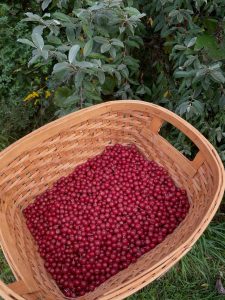Fungi benefit both humans and the environment. They help break down nutrients into portions that plants can absorb. Humans use fungi as food, preservatives, and medicinally. Endangered fungi species are often overlooked. Endangered plants and animals seem to get most of the attention. The International Union for Conservation of Nature (IUCN) is an international organization that has compiled and published a ‘Red List’ of endangered and threatened species worldwide. While there are over 60,000 plant species assessed and over 70,000 animal species assessed as of 2023 only a little over 500 fungal species have been assessed. Assessing fungal species for identification and population size has it’s own unique challenges. The effects of specific species of fungi extinction is difficult to predict, but could cause significant changes in certain ecosystems.
Progress in fungi conservation
Throughout the millenniums, different fungi classes have managed to build their unique habitats. They are important in decomposition, plant, human, and animal health. Scientists have worked harder to name as many species as possible. To date, they have managed to name only a small percentage. Mycologists say there are about 5.1 million identified species to date. They include molds, yeasts, and mushrooms. Several steps are involved in their conservation efforts such as the following:
-
Identification. Mainly, scientists use UV light to recognize fungi. They identify it by its color and structure of spores.
-
Characterization. Done using the structure of their molecules and DNA
-
Conservation. Minimizing the chances of the fungi going extinct.
Anyone can get involved in fungi conservation efforts. You could be a university teacher, an entrepreneur or college student. College students can now get someone doing homework for them. They can also receive assistance in writing essays and other writing tasks.

Figure 2-source-mdpi.com
Fungal red list threat factors
Before conservation efforts begin, scientists must first understand their threat factors. Causes of threats differ based on where the species is found. Generally, the following are the main causes of threats.
-
Loss of habitats. Fungi are adapted to specific geographic locations. Activities such as mining or the growth of cities take away their habitats.
-
Pollution. Humans deposit a lot of waste into land, rivers, and water masses. They create toxic environments for fungi survival.
-
Climate change. Some previously wet areas become dry while previously dry areas become wet. Climate change causes sudden changes in temperatures which kills fungi.
-
Excessive exploitation. Excessive harvesting of species to create medicine, food, or preservatives. People harvest without assisting the species to replenish.
-
Loss of symbiotic hosts. Some types of fungi grow in specific places. Many of them thrive on specific trees, animals, or soil. If the hosts go extinct, the fungi go extinct too.

Figure 3-source-redlist.info
Conservation strategies of rare and endangered fungal species
Preservation of rare and endangered fungal species is a major challenge. Mycologists must first study the species to determine their endangered status. There are new technologies available that help make the process easier. University students learn the application of some of these technologies in school.
Most of the conversation strategies focus on nature conservation. This is because most species become endangered due to nature pollution and habitat destruction. There are different conservation measures taken.
Minimizing exploitation of the species. Harvesting fungi for food and commercial use is a major factor affecting species. Mycologists work closely with nature conservationists and governments. Through their support, they establish policies that support controlled exploitation.
Protecting their habitats. There are specific habitats that support certain fungi species. Through government support, such areas are declared protected zones. The purpose is to provide space for the fungi to survive and multiply.
Control invasive species. Lately, the number of invasive species is increasing. In their quest for survival, they destroy native species. Their control is tough but it’s a crucial solution for saving native species.

Rehabilitating their habitats. Some of the habitats are already destroyed mainly through human activities. Their rehabilitation can help give the remaining fungi population space for replenishing.
Reforestation. Forests are excellent homes for most fungi species. Unfortunately, deforestation has left them endangered. Reforestation will help restore their homes.
Growing and preserving fungi. Some species are taken from their natural habitats and grown in artificial habitats. Some are then reintroduced into their natural homes while preserved in labs.
Lobbying for the creation and passing of conservation laws. Mycologists lobby for governments to create and pass relevant laws.
Lobbying for funding. Solicited funding from individuals, corporations, NGOs, and governments. The funds are used to study species, buy technology, and drive conservation efforts.
Spreading awareness education. Conducting awareness campaigns in colleges and society. In schools, they involve both the teacher and the student. Fungi conservation is part of the lesson learned by students studying microbiology.
Conclusion
Many conservationists focus on endangered animals and plants. They rarely give attention to endangered fungi. Mycologists have learned an important conservation lesson. They are working harder to conserve many fungal species in the red list. Anyone can get involved in conservation efforts through education, funding support, and preserving the environment.







One Response
What is the International Union for Conservation of Nature (IUCN) and its ‘Red List,’ and how many fungal species have been assessed on the list as of 2023? Tel U